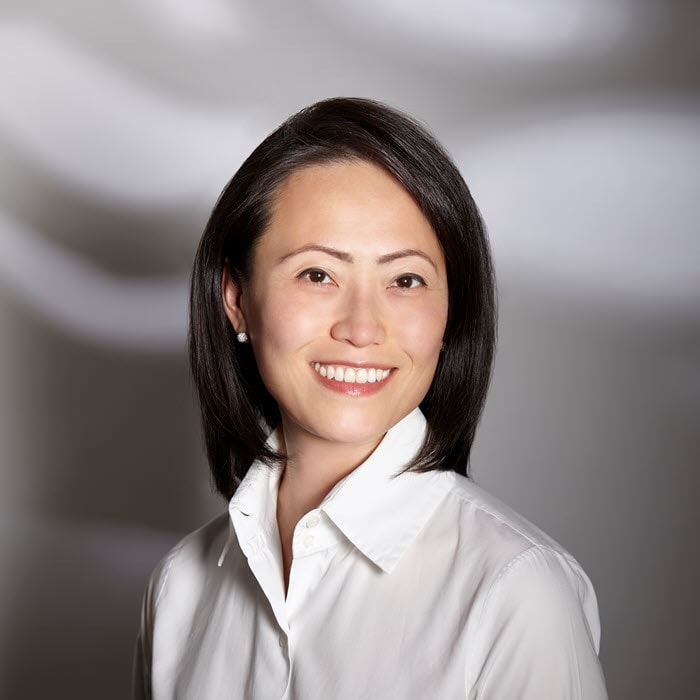
The power of networks Michael Arena on adaptive spaces and redesigning organizations for the future
11 minute read
16 January 2019
Organizational network analysis is set to rise in importance as leaders wake up to its value when it comes to organizational design.
Network science is approaching its golden age. Companies know they need to be more flexible and innovative to compete, but many don’t know how or what to change in order to get there. Organizational network analysis—the study of formal and informal relationships and information flows—has been around for many years, but some business leaders are just beginning to wake up to the power its insights can reveal when it comes to organizational design.
Part of that awakening can be attributed to the work of Michael Arena, chief talent officer at GM, and author of the recent book Adaptive Space.1 Arena’s research and work in applying network science insights within Fortune 500 companies have led to a wealth of practical guidance for business leaders trying to balance core operations with innovation to help their companies thrive.
Learn More
Read more from the Future of Work collection
Subscribe to receive related content from Deloitte Insights
Tiffany McDowell, principal and US leader for the Organization Strategies Market Offering at Deloitte Consulting LLP, and Anh Phillips, researcher and author from Deloitte’s Center for Integrated Research, recently sat down with Arena to dive deeper into the insights revealed in his book.
Tiffany McDowell: You have a new book out called Adaptive Space. I recently coauthored a paper entitled “The adaptive organization.” So I’m very keen on this topic! What do you mean when you say adaptive space?
Michael Arena: In short, adaptive space acts as a free trade zone where ideas can be openly explored, debated, shared, and exchanged in such a way that they lead to adaptation for the organization. I’ve been part of an academic research team for almost a decade and a half, and we were interested in why some organizations are adaptive and others aren’t. We looked at about 60 large Fortune 500 companies through more than 500 leadership interviews. What we determined was that every organization we evaluated had operational systems and structures—no surprise, that’s the way we get the bills paid. A little bit more surprising was that every organization had entrepreneurial pockets—even those that were not adaptive. But it was only a small minority of those 60 organizations that showed a recurring pattern—that were responsive and continually reinvented themselves either in a division or at the corporate level, though not always at the corporate level. These organizations had this third dimension which we since have called adaptive space, which is best thought of as that free trade zone where ideas can be pulled out of these entrepreneurial pockets (formally or informally) and then pushed into the stable structures of an organization so that they can generate new value in a changing marketplace.

McDowell: How did these organizations create these free trade zones? What were the attributes that enabled them to have that space?
Arena: Most of them weren’t thinking of it the way that we are today. It’s not just physical space, though sometimes it is. But I like to describe it more as relational and emotional space: It’s the degrees of freedom necessary to openly share. It’s knowing, as an employee of an organization, that I have the degrees of freedom and the emotional freedom to explore new ideas—unconventional ways that might in fact challenge the status quo. So in some cases organizations did it very intentionally.
Anh Phillips: This is a bit like organizational culture—it’s a bit squishy, and it’s hard to think of trying to craft this intentionally. What does that look like in practice?
Arena: I’ll share a couple of examples. One company had a monthly session where people were expected to come and present bold, cross-functional ideas that would disrupt their current status quo. They had all kinds of different practices where people would come in and they would present ideas. These ideas were almost always cross-functional by the time they hit this adaptive space, even though the entrepreneurial pockets were sometimes deep inside of a function or department. But once they get lifted up and pushed down into this more free trade zone, it required some interaction. It also required some conflict and some tolerance to be willing to debate and challenge each other.
Another company created a “real-win-worth” practice where once a month they would test ideas and they would ask themselves the questions: Is this a real idea? Is this worth some investment? And then they would have that debate in such a way that they knew they were going to at least create the opportunity to disrupt themselves before the outside market did.
Some organizations use approaches like design thinking—not just design thinking to go and prove one product, but design thinking as a way to break down the insular boundaries inside their organization. One company sends their folks out into the field to meet with customers—every employee. They use empathy techniques from design thinking so that they don’t become insular.
One trait in many organizations that weren’t adaptive was that they became highly insular. They would shut themselves off from the outside world, mostly becoming complacent and arrogant enough to believe that they already knew the answers. One person we interviewed said, “We studied our customer for 20 years. We know them better than anyone else in the world. Why would I spend four hours going out in the world to interview them?”
Phillips: Those are great examples, and the point about insularity is an important one. Understanding networks can help us break from insularity both in and outside of the organization. In your book, you described four different types of network roles. Can you talk a bit about those roles and why you believe they are so important?
Arena: I think for organizations to be adaptive, especially as we’re talking about organizational design and practices, the very first thing we need to do is ditch the one-size-fits-all mindset. We need to move away from the belief that this is the way the organization should be designed, and we need to move away from the belief that this was the best practice to deploy and scale across the organization.
The more sophisticated organizations are thinking about different social arrangements, and those are the four D’s that I talked about in the book. There are times where we need to be discovering ideas, and that requires one set of design and/or arrangements (brokers). There are times where we need to be developing those ideas, and that requires a different set of arrangements for a defined period of time (connectors). There are times where we need to take those ideas out of those entrepreneurial pockets and diffuse or scale them across the organization. That requires a different set of connections (energizers). And then ultimately those three will add up to disrupting the current structures and operational systems (challengers). These network roles are the way to enable that.
McDowell: I believe we are at the tipping point for organization network analysis, where we’re starting to see leaders understand the power of making the previously invisible connections visible through network science and using this to redesign their organizations. When you think about changing the way an organization is structured, have you seen specific designs being more effective at building adaptive space?
Arena: You know it all depends on what you’re aiming to do. If I’m aiming at discovery, one design works. If I’m aiming at development, a different design works. And I don’t believe that most organizations can be agile at large. I think one of the misnomers is that we keep talking about the “agile organization.” But we need to look at agility and stability combined as being the core recipe. In other words, you have to be agile enough to move away from where you are and meet the market where it is. And then you have to stabilize fast enough to be able to produce. They say that about 12 percent of organizations are able to do that.
So when I think of design, I think of them as social arrangements. If I want to discover, that is one design or social arrangement. If I want to develop, that is another one. I think organizations are all of those things at the same time. So it could be that it’s not about “this is the new design we’re going to,” but instead it could be that for six weeks we’re pulling these people. They’ve got these milestones and for six weeks they’re dedicated to getting something across the finish line. Then after those six weeks, they’re going back to their steady-state jobs where we’re going to ask them to help diffuse this out across the broader organization. And we have network maps that are good evidence of exactly that.
McDowell: That’s really interesting, and it is something we debate when we’re designing organizations into networks of teams. Sometimes we see that specialist resources get deployed on a cross-functional team for a short time and then come back and diffuse their learnings into their group. Other times, we suggest placing people into permanent cross-functional teams that are organized around a mission or purpose. And once you complete that mission, you keep that team together to deliver on another mission. Based on your framework, is one of those good for certain types of things like discovery and others are better for diffusion?
Arena: I actually think the answer is somewhere in between those two. Because every time you become part of a new team, you don’t have trust and cohesion. On the other hand, if you don’t break up and flow across different projects at times, then what ends up happening is you don’t get the discovery quotient. This sounds very nuanced, but it’s absolutely critical. Ron Burt talks about this as oscillation at the individual level—people who oscillate back and forth throughout their career between the central connector and broker. I’ll give you two real live case studies that we were just completely privileged to discover almost by mistake.
There was an acquisition that took place in one of these large companies that we had looked at. We took a time stamp of the network in this acquisition. That time stamp showed only the integration team between these two entities that were connected at about six months in. And what happened was, it was a miserable integration. The large company had bought the small company for innovative purposes, and no innovation was popping because there were no bridges. But the small group was completely isolated, partitioned off from the rest of the organization. Just by mistake, since there were some very top talented people in this little bubble, what happened was they decided to promote the people out into the broader organization. So they moved them from a cohesive central connectivity role into a brokerage role, and they brought along with them all the innovation that they had built in that small bubble. So that’s how I think about this—it’s much more like oscillation. And there are times where I toggle on; there are times when I toggle off.
The other example was the most profound case study for us. There was a small centralized innovation team within an organization. You could think about them as the R&D sort of design thinking camp, 35 very talented people. Across three years, they had a commercial hit rate of zero inside of this organization. So, management decided they had to disband this group of very high-end resources with PhDs. The good news was that they were top talented people, so they moved them out into the businesses. The very same ideas that they were trying to promote centrally, they’re now selling at different influencing points. That’s brokerage, inside the organization. Boom, the very same ideas started to pop across the next year. So that’s how I think about this. Now there’s a time I would argue that those people who have now become decentralized, there’s a time where they might become still because they’ve now become part of those other groups and they’re not thinking, and maybe even become insular. There’s a time where you may need to pull them back together again to develop the next big concept.
This is why I believe the agile organization is just wrong. We’re agile on the edges. We’re stable at the core. And that’s what an adaptive organization should really look like.
“This is why I believe the agile organization is just wrong. We’re agile on the edges. We’re stable at the core. And that’s what an adaptive organization should really look like.”
Phillips: So what do we do from an HR or people management perspective? How do we incentivize and rate the performance for these different roles? Do we do that uniquely?
Arena: This is why HR hates what I have to say, because it messes up their world. We’re talking about a world that’s more dynamic than static. And we, HR, love one-size-fits-all methods. What I’m talking about is becoming bimodal, maybe even trimodal in your mechanisms. Think about it this way—I’m going to give you a real live case study within General Motors. You know Cruise Automation is our self-driving technology bet. But it’s completely partitioned off from the organization. You literally cannot get into Cruise. I cannot get into Cruise without actually going through a gatekeeper. That’s by design. That’s 100 percent by design.
The gatekeepers are the bridge people that keep that growth path connected to the organization but disconnected enough so that it can move fast. What we know is it can move 20 times faster in the design that it’s in right now. But at some point that will be a problem, and this is why incubators and accelerators fail—because at some point that needs to become the new core. So, the bridge people are the most important people inside of the organization now because they keep this growth entity that we treat like a startup, we incent like a startup, we hire there separately. Everything is separate. It’s a whole distinct set of HR practices. We evaluate differently. We have different talent reviews with those folks from the core. The core is handled just like many large organizations, and the bridge people are in the middle. And those bridge people came from the core on purpose because they have credibility with the core. We’re thinking about bringing their social capital over with them as we put them in the bridge. The reason for that is the core trusts them, and they’ve been positioned with the growth path in this particular case. We now are replicating this many, many times. With that growth path, those people are trusted because they become almost like the librarian to the 105 years’ worth of legacy knowledge to do things like durability testing. To do things like how do you work with public policy to get this thing adopted? How do you deal with the insurance companies? All of those other things that are critical to a skeletal operation. In the end, you’re bimodal, if not trimodal, from an HR practice standpoint.
Phillips: As we wrap up, do you have any final thoughts you’d like to share?
Arena: I think it bears emphasizing that this isn’t for the faint of heart. In retrospect, it’s easy to tell stories that are successful. But when you’re in the midst of this, it is a hard thing. This is tough. Most organizations are designed against this.
I teach a class at Penn that we call “Leading from the center,” and what that means is leading from your personal center. This requires a set of convictions. It requires a sense of awareness, not as a leader as much as an individual who’s part of a movement inside of a large company, a set of convictions, a set of core principles, a degree of self-awareness to know when you’re pushing too little and when you’re pushing too much, and then to be able to make the judgment call: Am I going to continue to push knowing that I’m at risk, or am I going to back off? And there’s no right answer to that question. There are times when I personally have gone completely underground on issues and knew that it was best for the initiative and for me to just disappear for a while.
“I think it bears emphasizing that this isn’t for the faint of heart.”
From a leadership standpoint, this generally requires a degree of emotional intelligence beyond anything that we’ve thought about in the past. It’s almost like a dance with the system. And much more artful in understanding: Should I push in? Should I back off? Should I energize right now and be the cheerleader? Should I challenge right now and try to get people to see something to be even disruptive if people aren’t going to like me for it? That’s a whole different level of self-awareness.
The brutal truth is this isn’t for the faint of heart. You know if you’re trying to introduce change I often describe it this way: You can’t have a breakthrough without having something to break through. And that hurts. So you’d better go find some friends. You’d better build some social proof around that idea. And then once you’ve done that, you can actually then pivot and use the network to your benefit.
“You can’t have a breakthrough without having something to break through.”
McDowell: I absolutely agree! That’s what in our vernacular we call “culture of courage.”
© 2021. See Terms of Use for more information.
Explore innovation and the Future of Work
-
Future of work Collection
-
Innovation Collection
-
Democratizing data science to bridge the talent gap Article6 years ago
-
Can we realize untapped opportunity by redefining work? Article6 years ago
-
The untethered workforce Article6 years ago










